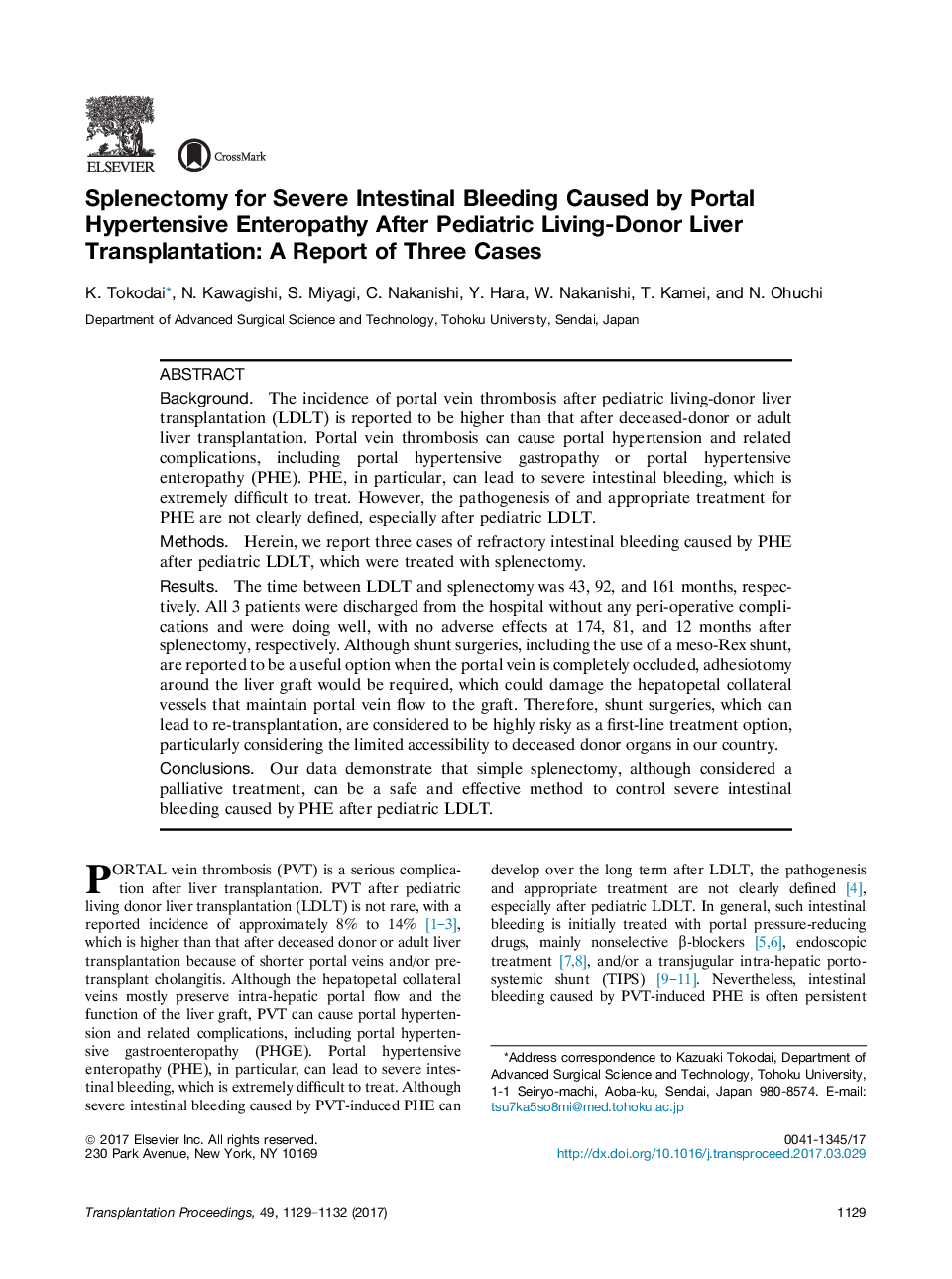| Article ID | Journal | Published Year | Pages | File Type |
|---|---|---|---|---|
| 5728814 | Transplantation Proceedings | 2017 | 4 Pages |
BackgroundThe incidence of portal vein thrombosis after pediatric living-donor liver transplantation (LDLT) is reported to be higher than that after deceased-donor or adult liver transplantation. Portal vein thrombosis can cause portal hypertension and related complications, including portal hypertensive gastropathy or portal hypertensive enteropathy (PHE). PHE, in particular, can lead to severe intestinal bleeding, which is extremely difficult to treat. However, the pathogenesis of and appropriate treatment for PHE are not clearly defined, especially after pediatric LDLT.MethodsHerein, we report three cases of refractory intestinal bleeding caused by PHE after pediatric LDLT, which were treated with splenectomy.ResultsThe time between LDLT and splenectomy was 43, 92, and 161 months, respectively. All 3 patients were discharged from the hospital without any peri-operative complications and were doing well, with no adverse effects at 174, 81, and 12 months after splenectomy, respectively. Although shunt surgeries, including the use of a meso-Rex shunt, are reported to be a useful option when the portal vein is completely occluded, adhesiotomy around the liver graft would be required, which could damage the hepatopetal collateral vessels that maintain portal vein flow to the graft. Therefore, shunt surgeries, which can lead to re-transplantation, are considered to be highly risky as a first-line treatment option, particularly considering the limited accessibility to deceased donor organs in our country.ConclusionsOur data demonstrate that simple splenectomy, although considered a palliative treatment, can be a safe and effective method to control severe intestinal bleeding caused by PHE after pediatric LDLT.
